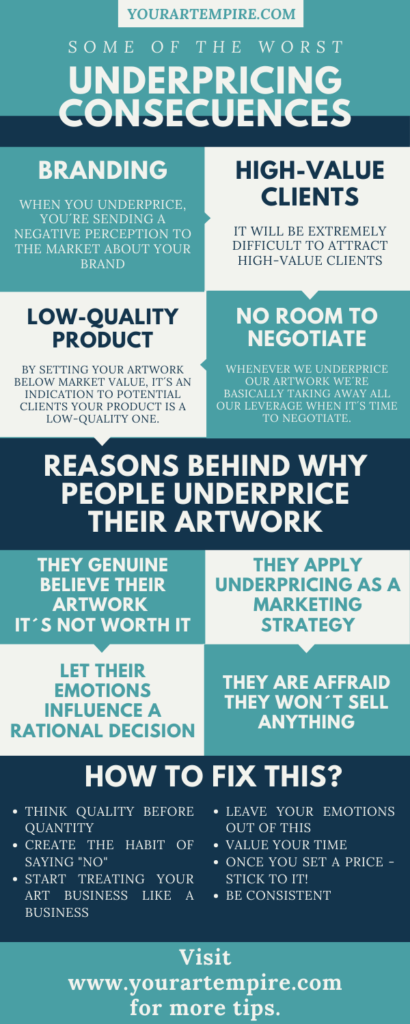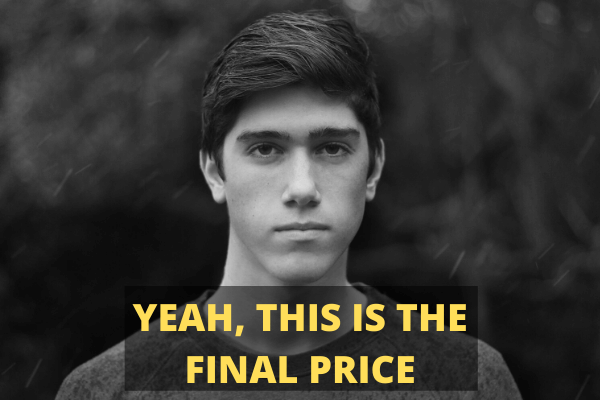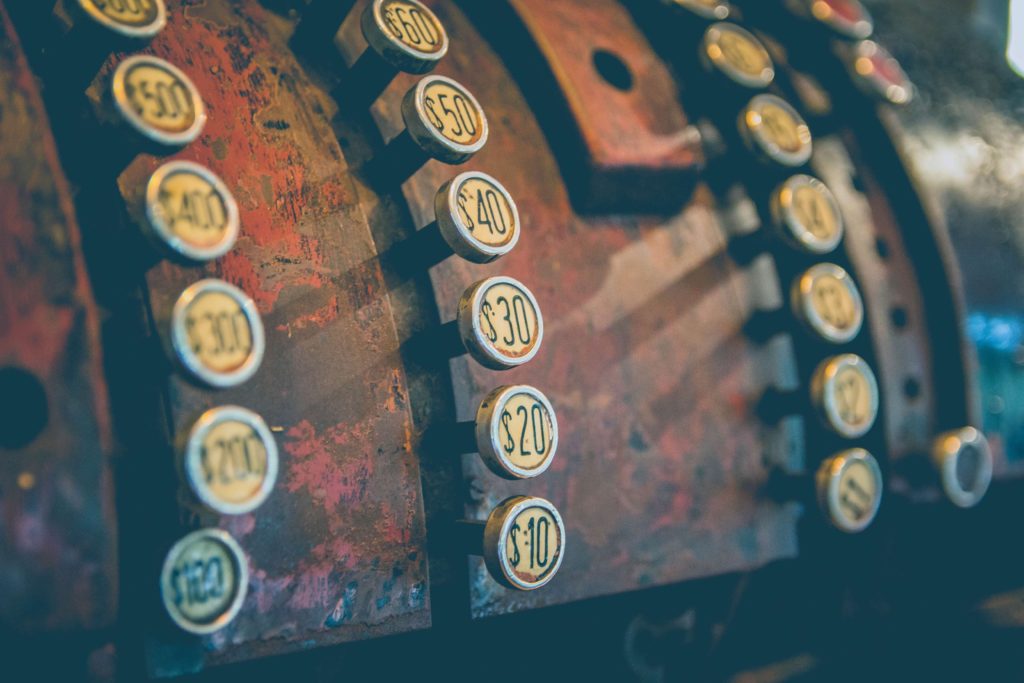Don’t know how to price your artwork?
Be able to know how much to charge for our artwork has always been one of the most challenging aspects artists have to determine. This debate has been going on for years without being able to reach a consensus on what is the best method or strategy to be applied that maximizes our income and, at the same time, doesn’t scare customers away.
There has to be a balance, because…
If we set the price too low, we could be losing a lot of money in the long run and, on the other hand, if we set the price too high our artwork could take a long time to sell (if it sells at all!).
So, how do we find this middle “sweet spot” to find this balance?
Where to Start?

First, let’s touch on some essential concepts that you must keep in mind at all times whenever you are going to decide how much your artwork is worth.
These concepts will give you a hand by taking all the “subjectivity” away off any pricing analysis and help you reach that balance we talked about at the beginning.
Who Is Your Target Audience?
The first step is to define who we are going to sell. It may sound quite obvious, but it is something where many artists fail.
This isn´t a complicated process. In fact, all it takes is for you to answer the following questions.
Are you going to sell your artwork locally? Regionally? Nationally? Or Internationally? Are you targeting younger generations? Or retire art collectors? Are you targeting wholesales o retail?
Answering all these questions will play a significant role in what should be the best possible price range for your art.
Perhaps running a real state analogy will help to get this point across. Let´s assume for a moment we want to establish a price for a house we would like to sell.
Do you believe a house will have the same market value whether we sell it in Beverly Hills in comparison to North Dakota?
Of course not, even if it is the exact same house. Well, this same principle applies to your artwork business. In fact, this pretty much applies to any business.
Furthermore, knowing more about who your target audience is, will give you an edge over your competition. Because you will be in a much better position to continue producing artwork that resonates a lot better with their interests, expectations, and preferences.
Over time you will find out,
it is much better to adjust your artwork to what your audience and market needs/desire rather than trying to push your art to them.
Researching Pricing Strategies From Other Artist With Similar Artwork
Conducting an in-depth research and analysis of your market and focus on factors like price range other artists in your niche are selling their artwork.
Especially, pay close attention to those artists who have a similar resume as yours, as well as awards, accolades, accomplishments, and experience. You can do this research by just going online, visiting an art gallery or even visit some open studios.
Ask questions, gather as much information as possible as this will help you avoid setting a price that is either too high or too low.
Never Underprice Your Artwork

It makes me sad to say, this is a widespread practice, especially among new artists.
I can’t begin to stress all the negative consequences resulting from underpricing your artwork, particularly in the long run.
And this is not something exclusive to the art business. This applies to all businesses alike, regardless of what’s your industry or niche. Some of the worst consequences that come from underpricing your artwork are…
- You’re sending a negative perception of your brand.
- It will be complicated to attract high-valuable clients
- It’s an indication of potential client’s your product is low-quality.
But…Why is this?
It’s hard to pinpoint a reason that explains this, but perhaps the following infographic can put you on the right path.

Be Aware of Your Costs
This might seem evident by many of you, and if that’s the case for you, I am glad you’re at that level. But you will be surprised how many young artists I’ve come across that have no idea about how to build a cost budget.
I mean, I am not saying you need to learn to be an accountant to do this. I am mainly stating you need to be aware of how much you need to invest in running your art business.
Anything from the cost of materials, your art studio (or anywhere else you work) related expenses like electricity and, most importantly, how many hours you spend producing your art.
All of this will add up to your based costs and, from there, you add your profit margin.
Why I Don´t Like Hourly-Based Prices
Plain and simple?
Because hourly destroys efficiency.
Also, from a customer perspective, if you have two pieces of artwork on sale with the same dimension, but artwork #1 took you 10 hours to make and, artwork #2 took you 20. It will very hard for you to justify the differences in prices and even sell artwork #2.
You can leverage hourly-based pricing models in your favor in particular situations.
But it’s not very common.
Furthermore, since you have to give to potential customers an approximate cost of your artwork, it will be tough even for an experienced artist to estimate how much time it will take to finish it.
This is why I prefer a size-based pricing model. It makes pricing your artwork a lot easier.
All you need to do is determine how much you will charge, let’s say, for square inch. And use this as your “multiplier” to get your art price.
For example, let’s say you establish your multiplier at $10 per square inch and, you have a client that would like to purchase art in a 4 x 4 canvas (16 square inches).
So, by doing a little math, we have $10 x 16 = $160
You now know you need to charge $160 for the job.
You Need To Be Emotionless On Any Business

It’s very common to create an emotional bond with many of the pieces we create. After all, when we dedicate so many hours to a piece, taking into account all the creative effort, and the emotions we invested in it, its only natural that some sentimental value will be built.
This is why it is better just to keep them in your personal space. But you need to detach yourself from your artwork emotionally because getting emotionally involved will often end up in overpricing.
And this process (pricing), should only involve a subjective analysis of the physical attributes of the job and not how much value it has for you on a personal level.
Moreover, when you build an emotional attachment, it creates a subjective reality that is often very hard to explain to customers.
How can you put a price on an emotion? And, even worst, how do you explain that to a customer?
Conclusion
Pricing your artwork is not an exact science, but this doesn´t mean we can’t take a large portion of all the guesswork involved and make it easier for both you and your customers.
People often let a problematic situation to overwhelm them and even turn it more difficult to handle.
All it takes is a bit of guidance (this is why you’re reading this article), get organized and take action!
Most of the time, all it requires is an attitude change, be more confident.



